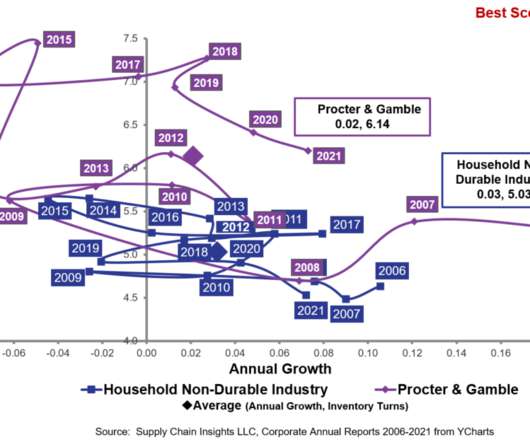The Coffee Pot Conversation That Will Not Happen
Supply Chain Shaman
JUNE 7, 2021
Gartner purchased the firm in 2010.) Driving Improvements in Supply Chain Excellence. I did not think that anyone had a clear definition of supply chain excellence. My desire was to make the rankings of the Top 25 supply chain report data-driven based on balance sheet results. Reflection.
















Let's personalize your content